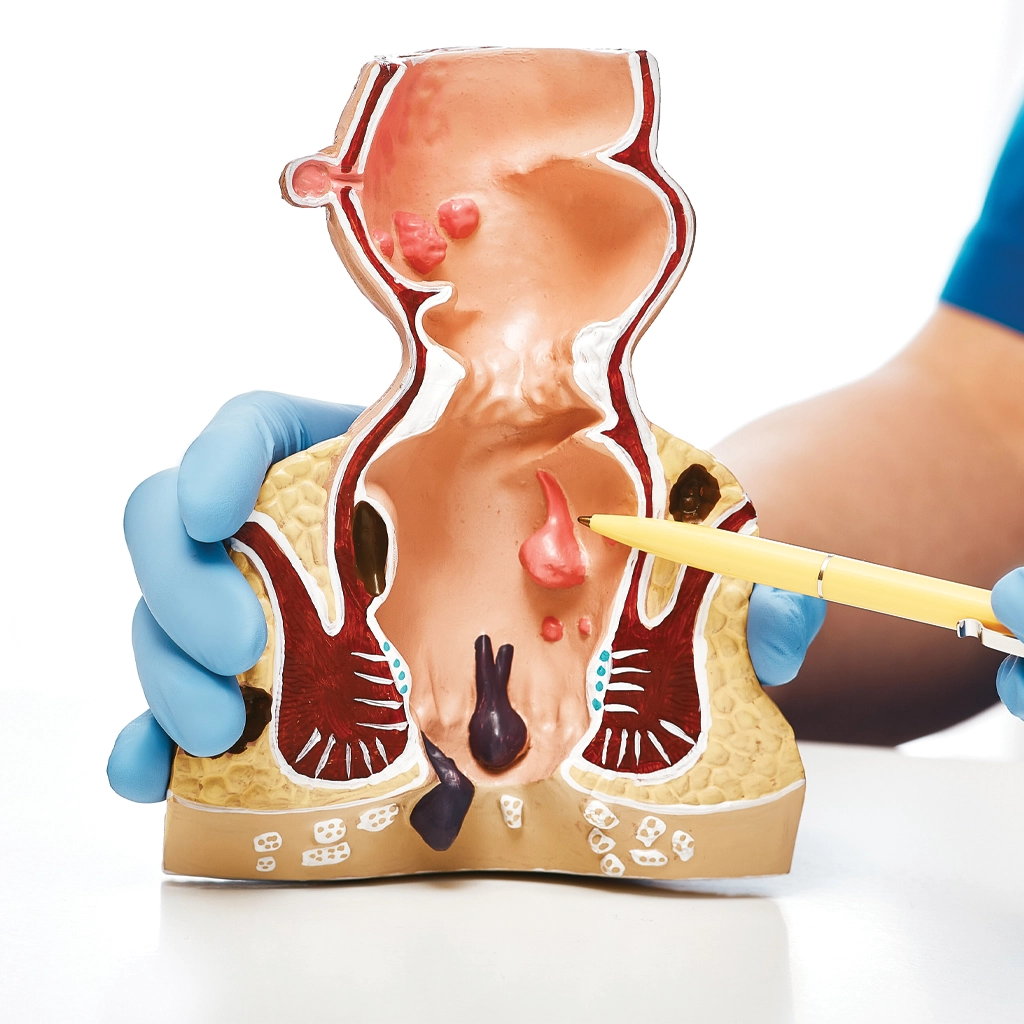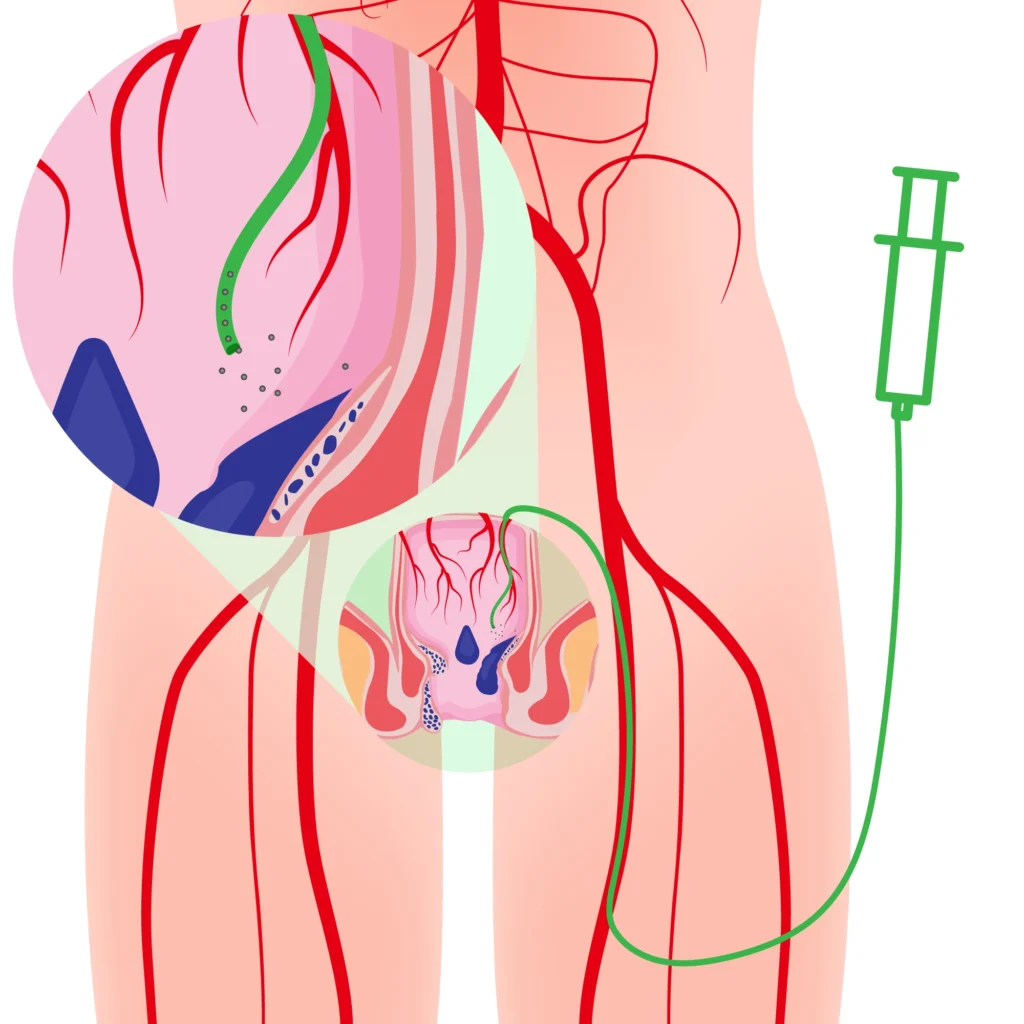Hemorrhoidal Artery Embolization (HAE)
Non-surgical treatment for chronic hemorrhoids
Surgery to treat chronic hemorrhoids—called hemorrhoidectomy—is a major surgery with a long and painful recovery. Fortunately, there is now a minimally invasive option to treat hemorrhoids and alleviate symptoms permanently.
What are chronic hemorrhoids?
About half of all Americans will experience hemorrhoids in their lifetimes. In most cases, they will go away independently or after making diet changes, administering topical treatments, or taking medications or supplements. Sometimes, hemorrhoids can’t go away on their own due to the blood not being able to drain out (prolapse). This can cause itching, bleeding and painful bowel movements.
Hemorrhoids are actually swollen veins inside the lower rectum or under the skin around the anus, similar in nature to varicose veins. They most commonly occur in those between 45 and 65 years of age. They may be caused by an increase in pressure in the lower rectum through one or more of the following factors:
- Sitting for long periods
- Straining or excessive exercise
- Spinal cord injury
- Constipation or diarrhea
- Being overweight
- Pregnancy or childbirth
- Family history



